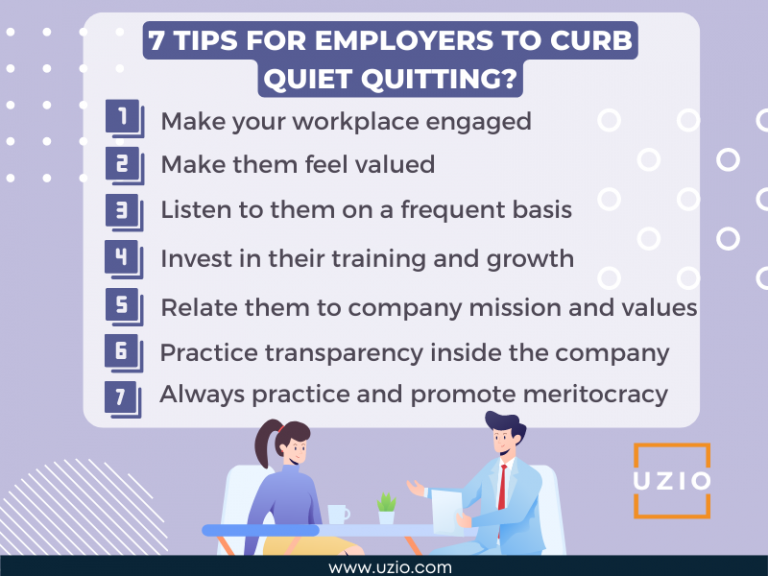
Quiet Quitting Work: Why More And More People Are Choosing To Quit Their Jobs Silently
Quick links
-
Introduction
-
What is Quiet Quitting?
-
Why Quit Quietly?
-
What Can Employers Do To Curb Quiet Quitting?
Introduction
Silent Quitting refers to the behavior whereby employees do the bare minimum not to get fired — they are physically present but have mentally checked out from doing anything above and beyond what they absolutely have to.
Though it’s difficult to stop the downward spiral of employees quietly quitting, there are ways to proactively prevent it from happening in your workplace, both by recognizing the signs of quiet quitting in existing employees and making sure you don’t inadvertently push new employees into that frame of mind before they even start their first day on the job.
What is Quiet Quitting?
Quiet Quitting is when an employee does just enough not to get fired. They show up to work, but they’re not putting in any extra effort. They “coast”. It has become a big phenomenon on TikTok with more than 3.9 million video views. If you see some of these videos, you will find that promotores are making a case that it is not quitting but it is setting the right kind of boundaries or it is about having the right kind of work life balance or it is about reducing stress at your workplace. Considering this is spreading on TikTok, it is safe to assume that it is more prevalent in the younger generation.
So how do you know if your co-worker is participating in this new trend? It’s hard to tell. You may not notice a quiet quitter right away because they won’t exhibit typical warning signs that someone might be looking for a new job or getting ready to quit.
There are no telltale signs or red flags that someone has given up on their job like talking about taking vacation time or getting pep talks from friends who are unemployed and available.
But according to Metro, this can take many forms – including turning down projects based on interest, refusing to answer work messages outside of working hours or simply feeling less invested in the role.
Why Quit Quietly?
There are a few reasons why people might choose to quit their jobs silently. Maybe they feel like they’ve given their all to the company and they’re just burnt out. Lack of engagement at work seems like the primary driver of Quit Quitting.
A Gallup poll released earlier this year found just 32% of employees were now engaged, compared to 36% in 2020. A downward shift between 2020 and 2021 marked the first annual decline in engagement in over a decade, according to Gallup.
Sometimes even the best of the employees who are dedicated to their work, who put in the extra effort get discouraged and start thinking about Quiet Quitting because they realize that it is not a level playing field. They don’t get the promotion they so badly feel they deserve or the senior management does not recognize their extraordinary effort or worse still, somebody who has been “coasting” gets promoted.
This kind of environment can push even good dedicated employees to become Quite Quitters. This is their way of protesting. They feel like they were wronged. After putting so much time, effort, and energy into a company, they don’t receive any recognition or actual benefits.

What can employers do to curb Quiet Quitting?
An engaged workplace is the antidote to Quiet Quitting. The key to having an engaged workplace is the culture of the company. Do employees feel valued? Do employees feel listened to? Does the company invest in their training and growth? Do employees see meaning in what they do? Can they relate to the mission and values of the company? Is transparency practiced inside the company? Does the company practice meritocracy?
If the employers are looking for ways to curb Quiet Quitting, they should focus on getting the right answers to the questions posed above.





